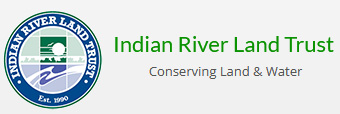Protecting Lands
Land Stewardship
The Indian River Land Trust owns most of its preserves. As a landowner, it is the Land Trust's duty to care for these precious land and water resources. Land stewardship means ensuring their long-term sustainability for the benefit of current and future generations.
Land stewardship responsibilities for Land Trust-owned preserves involve:
- Preparing and carrying out property management plans
- Maintaining native habitats for plants and wildlife
- Restoring native upland and wetland habitats
- Controlling invasive and nuisance vegetation and animals
- Building and maintaining trails, gates and fencing
- Removing trash and addressing other impacts from humans
- Enlisting citizen volunteers to help care for the preserves
- Coordinating educational tours for the public and student groups
- Facilitating scientific research at Land Trust preserves
- Cultivating good relations with neighboring landowners and trail users
- Partnering with like-minded organizations for healthy lands and waters
- Conducting outreach to the public about the Land Trust's mission
The Land Trust also protects land with conservation easements. A conservation easement is a legal agreement with a landowner that protects the natural values of the land by limiting future development and land uses. Land Trust staff visit each conservation easement property annually to:
- Develop and maintain a working relationship with the landowner
- Record the condition of and any changes to the land
- Ensure that the conservation easement agreement is being upheld
- Work with the landowner to resolve any violations of the conservation easement agreement
